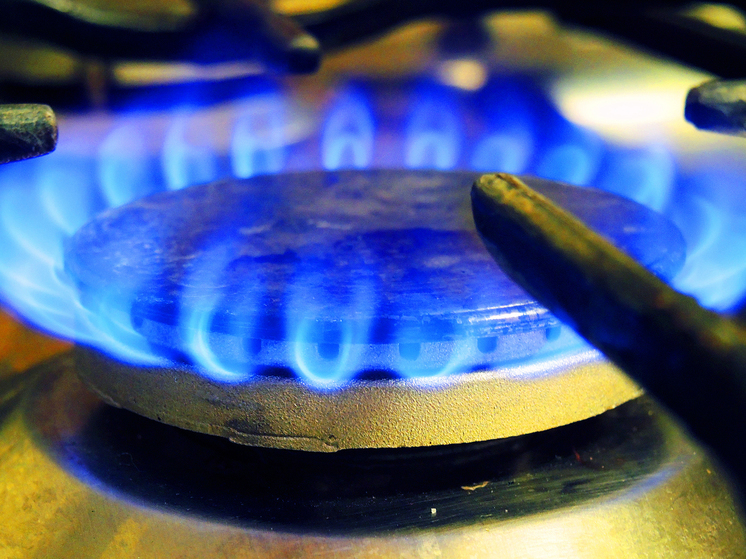Gas tanks that do not require a car are now impossible to fill up
This year, many summer residents near Moscow faced an unexpected problem: gas stations and distribution organizations refuse to fill propane-butane popular among the «horseless» » consumer five-liter cylinders. To continue using a gas stove, you must pay at least 5,000 rubles (the price of a new cylinder is higher plus the replacement of the gearbox). Refuelers admit: for them, summer residents with small cylinders are an extra headache. Why is this happening — found out «MK».

It didn't start yesterday: «advanced» branded gas stations aimed primarily at motorists stopped working with five-liter cylinders already in the mid-2010s. However, the most conservative part of consumers of liquefied gas did not notice this until the last moment: almost the majority of gardening associations of the Moscow region were covered by the traditional service of cylinder exchange with delivery.
“Everything worked very simply,” explains Natalya Stepanova, chairman of one of the SNTs in the Taldom region. — On Saturdays at the same time, around 11 am, a car came to the nearest store, exchanged cylinders. There have always been “five-litre” ones, this is a favorite format for pensioners: at a respectable age, you can’t turn big cylinders.
Since this year, «gas carriers» with the exchange of cylinders in many horticulture no longer appear: the network has been significantly reduced. As explained by «MK» in the company involved in this service in Dubna, the point is to reduce demand. Customers, as reported in the service, prefer to buy their own cylinders again and fill them at gas stations.
“It's amazing if it were different,” comments a summer resident from the Chekhov district of the Moscow region who uses bottled gas. — The last time I used the exchange was during the covid pandemic, in 2020. Instead of a cylinder manufactured in 2010, certified until 2024, I was given a cylinder manufactured in 1996, which was certified until 2020. The next year, I ran out of a tank in the middle of the week, I went to the gas station with it — and they didn’t accept it, I had to buy a new one. Of course, I won’t give this new one back for an exchange.
But this is about larger containers (12, 27 and 50 liters). With five-liter ones, the main problem lies in its own type of filling connector — it is used, as MK was told at the gas filling station in Taldom, only with “marching” frog-type gearboxes. Larger containers are filled using a standard ½» left-handed fitting.
“Filling such a cylinder completely is a few seconds and 95 rubles,” the gas service employee explained. — For the sake of this, there is no point in fooling around with additional adapters.
So the owners of the most compact, easily portable gas cylinders without a car turned out to be hostages of the situation — this format is simply being withdrawn from the market. In some regional centers adjacent to the Moscow regions and in a number of other “random” places, traditional points for the exchange of gas cylinders are probably preserved, where they can still work with “five-liter bottles”, but finding them in 2023 is already a matter of great luck.
— In Soviet times, the liquefied gas circulation system was arranged radically differently than today, — says Alexei Zhulin, ex-employee of Tveroblgaz. — Cylinders were not considered to be fully the property of the consumer who was registered as a subscriber of the gas network. It's just that he did not consume natural gas through a pipeline, but liquefied in cylinders. There was a developed network of exchange points, there was a delivery of cylinders for the exchange of special vehicles at the location of subscribers. Therefore, the issues of certification of cylinders and their format should not have bothered subscribers: if the state decided to decommission certain cylinders, there would be a corresponding order. Now the tank seems to be your own, where to refuel is only your problem.
Examination of a gas cylinder of “actual” formats (12-50 liters) also costs 2-4 thousand rubles, depending on the region and the form of ownership of the gas station: those cylinders that do not pass by date, but are technically most likely suitable, are taken for exchange. However, some containers — for example, with dents, cracks, deep rust — are accepted only for recycling, free of charge. “If you want, you can make a brazier out of it, many do it,” refuellers often advise.
— Now it’s unprofitable to mess with household cylinders, gas networks have two main accents: gasification of houses and installation of gas tanks, — Alexey Zhulin sums up. — In both cases, the consumer stops using the cylinders.
But it is this method of gasification (albeit not very convenient, requiring frequent refueling) that is the cheapest for the end consumer. Since it does not include any network maintenance fees (which are in any newly concluded contract for the supply of main gas), nor large expenses for the purchase and maintenance of a gas tank. But it seems that cheap solutions are not beneficial to anyone except ordinary users.


